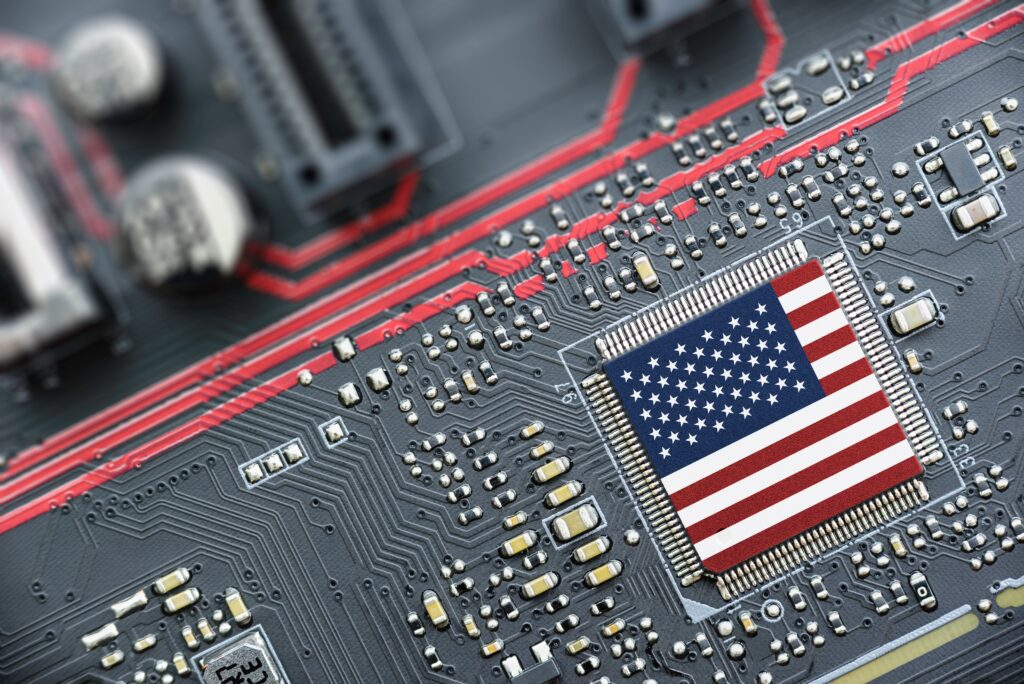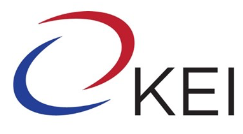The Peninsula
Trump’s AI Action Plan Belies Contradictions Between Innovation and Security
Published September 4, 2025
Author: Hyo-young Lee
Category: Economic Security, Technology, The United States

The Donald Trump administration’s AI action plan, released on July 23, 2025, seeks to accelerate the growth and proliferation of U.S. AI technology while strengthening restrictions on high-end transfers to adversaries. It emphasizes deregulation to ensure U.S. supremacy in AI, expanded federal support for exports, and stronger controls on AI chips bound for China.
While the AI action plan contains numerous policy recommendations for federal agencies to promote innovation, build infrastructure, and address national security risks from the proliferation of AI technologies, the executive orders provide additional guidance to federal agencies, particularly for addressing potential biases in AI models for federal procurement, accelerating data center construction, and promoting and exporting U.S. AI technology abroad.
Trump’s new AI policy deviates from the AI Diffusion Rule proposed by his predecessor, which leaned on regulations to minimize the risks from AI. While the Trump administration has rejected any continuation of policies adopted under the Joe Biden administration, such deviation in AI is also partly driven by the evident failure of the previous administration’s efforts to outcompete Chinese advancements in this space. China’s announcement of its breakthrough in developing its own AI model, DeepSeek, sent shock waves throughout the United States and was received as a grave “wake-up call” to U.S. tech companies. Furthermore, President Trump’s close attention to business interests appeared to herald a different policy approach for addressing AI competition through fewer regulatory obstacles against U.S. tech firms.
In addition to the policy recommendations to strengthen the U.S. domestic infrastructure for AI technology advancement, the AI action plan also seeks to promote U.S. exports as part of a broader effort to secure U.S. leadership in AI diplomacy and security. This appears to be yet another divergence from the previous administration’s approach toward the AI sector. The action plan proposes the use of federal financing tools, such as direct loans and loan guarantees, equity investments, and credit guarantees, to support “priority AI export packages” selected by “industry-led consortia.”
The action plan also proposes policy measures to strengthen export controls on high-end AI chips that could end up in the hands of adversarial countries, such as China. Several proposals were made to strengthen the effectiveness of export controls, such as location-verification measures on advanced AI-capable U.S. chips to better monitor their end-use, and expanding the scope of existing export restrictions to include semiconductor manufacturing sub-systems in addition to the current monitoring of only major systems for chip manufacturing.
Overall, the Trump administration’s AI action plan appears to be a whole-of-government effort to accelerate the growth and proliferation of U.S. AI technology, while simultaneously strengthening restrictions on the transfer of high-end technology to key adversaries.
It was surprising, then, that around the time of the release of the action plan, President Trump struck a deal with Nvidia that allows the U.S. tech firm to sell its H20 chips (lower-end graphics processing units made specifically to comply with tightened export controls under the Biden administration) to China, in exchange for a share of its revenues from the chip sales. The move was strongly criticized as allowing companies to “pay to play” and “monetizing export controls” to the detriment of U.S. national security interests. Concerns were high that such a deal could undermine the very purpose of export controls in the first place—to prevent the abuse of U.S. AI technology by Chinese counterparts for both commercial and military purposes.
More worrisome was the indication that export controls could be used as bargaining chips for transactional purposes with the current U.S. administration. This could send a message that the U.S. government is not guided by firm principles or long-term strategic planning, but is rather cursed by short-term myopia. For allies and partners abroad, it is less clear than ever before whether Washington is credible enough to align with on export control regimes.
How can this contradiction be understood? Among the three pillars that constitute Trump’s AI action plan, the third pillar provides the guidelines for strengthened measures on export controls. As stated, the fundamental aim of the new rules for export controls was to better monitor the end use, or final destination, of dual-use technologies to prevent access by Chinese companies. The results of a ninety-day review report concluded that the Department of Commerce was overly lax in approving exports of advanced technology to China and prioritized business interests over national security concerns. Therefore, the export control rules contained in the AI action plan can be rightly understood as having taken a stronger approach in implementing export control measures to inhibit any transfers of high-end U.S. technologies to China.
Another differentiating feature of the Trump administration’s AI policies is its emphasis on AI export promotion. In addition to the action plan, President Trump signed an executive order, Promoting the Export of the American AI Technology Stack, calling for multiple agencies to craft implementable AI export packages and explicitly mandating the “mobilization of federal financing tools” to provide financial support for increased AI exports. But the executive order does not mention anything about the final destination of exports, which may have to be considered for national security reasons. There are only weak references to incorporate measures to “ensure the security of AI models and systems.” This shows that contradictory policy directions are being enshrined under one single pillar within the AI action plan, to the effect that even the president himself is confused in making decisions regarding export restrictions on AI chips. While Nvidia tried to defend the deal as allowing only the exports of low-end chips that do not have backdoors or kill switches, which would otherwise have national security consequences, the export license nonetheless contradicts the new AI policy that aims to strengthen export controls and provide extended coverage to even the components of chip manufacturing equipment.
More recently, President Trump has vowed to impose “substantial” new tariffs against countries that restrict U.S. chip exports, in particular countries that install digital barriers such as digital taxes and other regulations. There are also reports that the U.S. government plans to require greater equity from domestic and foreign chip manufacturing firms in exchange for receiving grants from the CHIPS and Science Act. While such moves may be in line with the Trump administration’s efforts to “Make America Great Again,” these tactics for managing the global competition in semiconductors will make it more difficult for U.S. trading partners to commit to any U.S. demands for policy alignment. This is especially so, as the Trump administration has recently decided to revoke the validated end-user (VEU) waivers granted to South Korean semiconductor manufacturing firms exporting wafer fabrication equipment to China. There appears to be a “double standard,” under which U.S. firms and non-U.S. firms exporting to China are treated differently when it comes to export restrictions. Furthermore, aside from the negative impact of the sudden revocation of the waiver on South Korean companies, the decision comes in the wake of a bilateral summit meeting between the leaders of the two countries, which was deemed to have set a good foundation for bilateral cooperation and attracting Korean investments to help the United States strengthen its industrial competitiveness. South Korea has committed USD 350 billion in investments to help the United States rebuild its manufacturing capacity in key strategic industries, including AI and semiconductors.
While the Trump administration has yet to articulate a clearer and coherent strategy on how to address the contradictory demands for innovation and national security involving AI technology, it is imperative to make necessary considerations for key partners that have committed to help the United States achieve and maintain its supremacy in the global AI race.
Dr. Hyo-young Lee is a Resident Fellow at KEI. All views presented are the author’s alone.
Photo from Shutterstock.
KEI is registered under the FARA as an agent of the Korea Institute for International Economic Policy, a public corporation established by the government of the Republic of Korea. Additional information is available at the Department of Justice, Washington, D.C.
